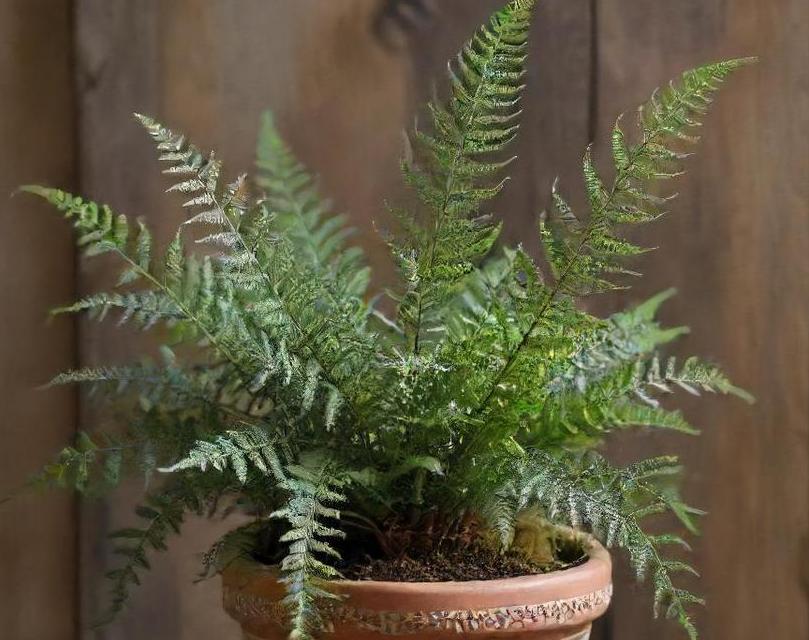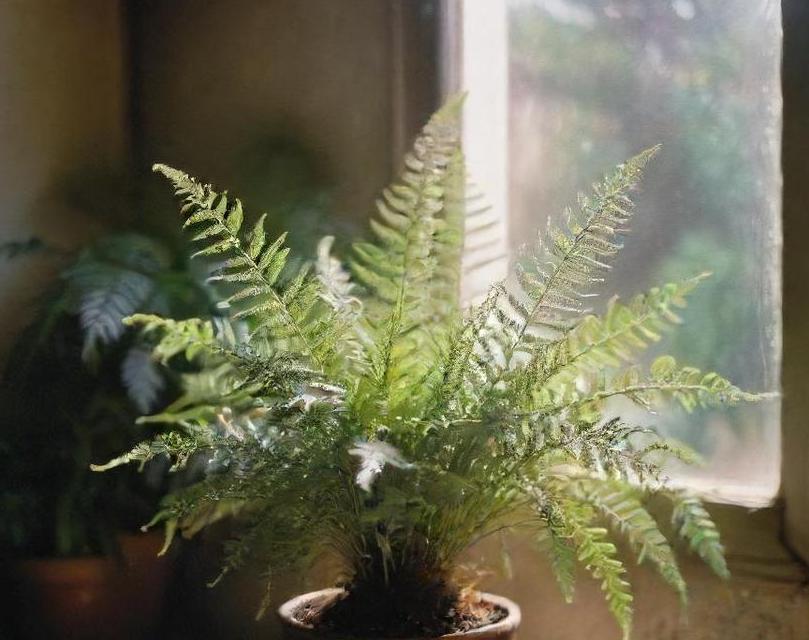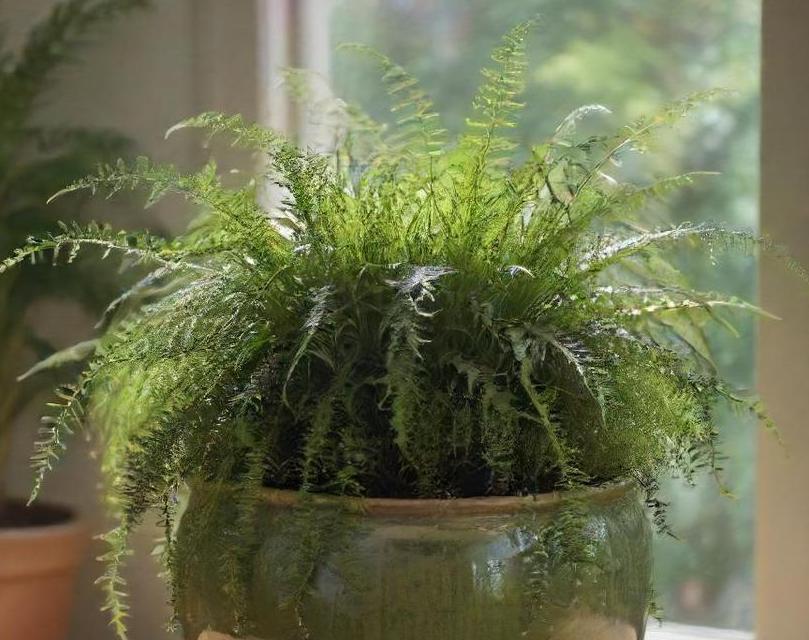- You are here:
- Home »
- Indoor Plants
- » Foxtail Fern Care Guide

Foxtail Fern Care Guide
Indoor plants have become an essential aspect of interior decor, not just for their aesthetic appeal but also for the numerous benefits they bring to indoor environments. Among the vast array of indoor plants available, the Foxtail Fern (Asparagus densiflorus ‘Myers’) stands out as a popular choice for its unique appearance and low maintenance requirements. In this comprehensive guide, we delve into the fascinating world of Foxtail Ferns, exploring their botanical characteristics, historical and cultural significance, common names and varieties, and much more.
Contents
- 1 What Is Foxtail Fern?
- 2 Botanical Characteristics
- 3 Historical And Cultural Significance
- 4 Common Names And Varieties
- 5 Light Requirements
- 6 Soil Requirements
- 7 Temperature Requirements
- 8 Humidity Requirements
- 9 Watering Needs For Foxtail Fern
- 10 Fertilization
- 11 How To Plant Foxtail Fern
- 12 Potting
- 13 Pruning Techniques For Foxtail Fern
- 14 Propagation Methods For Foxtail Fern
- 15 Troubleshooting Problems With Planting Foxtail Fern Indoors
- 16 Conclusion
- 17 FAQS
What Is Foxtail Fern?
The Foxtail Fern, scientifically known as Asparagus densiflorus “Myers”, belongs to the Asparagaceae family and is native to South Africa. Despite its common name, it is not a true fern but rather a member of the asparagus family. This evergreen perennial plant is prized for its dense, upright growth habit and striking foliage, making it a popular choice for indoor gardens, containers, and hanging baskets.
One of the most distinctive features of the Foxtail Fern is its plume-like foliage, which resembles the bushy tail of a fox, hence its common name. The plant produces long, upright stems adorned with numerous needle-like leaves arranged in a spiral formation, giving it a lush and feathery appearance. During the spring and summer months, mature Foxtail Ferns may also produce small white flowers followed by red berries, adding further visual interest to the plant.
Botanical Characteristics
Understanding the botanical characteristics of the Foxtail Fern is essential for its proper care and cultivation. Here, we delve into the key aspects of its morphology and growth habits:
Morphology
- Stems: Foxtail Ferns feature long, wiry stems that emerge from a central crown. These stems can reach heights of up to 2 to 3 feet, creating a compact yet striking display.
- Foliage: The foliage of the Foxtail Fern consists of fine, needle-like leaves that grow in dense clusters along the stems. The leaves are typically bright green in color and have a soft, feathery texture.
- Flowers: While not its main attraction, Foxtail Ferns may produce small, white flowers in spring or early summer. These flowers are inconspicuous and are often followed by red berries, adding a touch of color to the plant.
Growth Habits
- Upright Growth: Foxtail Ferns exhibit an upright growth habit, with stems that grow vertically from the center of the plant. This growth pattern makes them well-suited for use as focal points in indoor gardens or as vertical accents in larger plant arrangements.
- Clumping Habit: Asparagus densiflorus ‘Myers’ tends to form dense clumps over time, with new stems emerging from the base of the plant. This clumping habit can be visually appealing and adds to the plant’s overall fullness and lushness.
Historical And Cultural Significance

Foxtail Ferns have a rich history and cultural significance, both as ornamental plants and as symbols in various traditions and beliefs. Here, we explore their historical roots and cultural associations:
Origin And Spread
- Native Habitat: The Foxtail Fern is native to the coastal regions of South Africa, where it thrives in sandy soils and mild climates. Its natural habitat provides valuable insights into its preferred growing conditions and care requirements.
- Introduction to Cultivation: While native to South Africa, Foxtail Ferns have been cultivated and introduced to other parts of the world for their ornamental value. They are now widely grown in temperate and subtropical regions, both indoors and outdoors.
Cultural Symbolism
- Resilience: In many cultures, the Foxtail Fern symbolizes resilience and endurance, owing to its ability to thrive in diverse environmental conditions. Its tough, drought-tolerant nature is often seen as a metaphor for perseverance in the face of adversity.
- Fertility and Abundance: The lush, vibrant foliage of the Foxtail Fern is associated with concepts of fertility and abundance in some cultures. It is sometimes used in fertility rituals or as a decorative element during celebrations of harvest and prosperity.
Common Names And Varieties
Foxtail Ferns are known by various common names and are available in several cultivars, each with its unique characteristics. Here, we explore some of the most popular common names and notable varieties:
Common Names
- Foxtail Fern: The most widely recognized common name for Asparagus densiflorus “Myers”, derived from the plant’s distinctive plume-like foliage resembling a fox’s tail.
- Asparagus Fern: Despite its name, the Foxtail Fern is not a true fern but rather a member of the asparagus family. However, its fern-like appearance has led to its association with true ferns, hence the common name “Asparagus Fern”.
Varieties
- Asparagus densiflorus ‘Myers’: The standard variety of Foxtail Fern, known for its dense, upright growth habit and bright green foliage. It is widely available in nurseries and garden centers and is prized for its durability and adaptability.
- Asparagus densiflorus ‘Sprengeri’: A popular cultivar with longer, trailing stems and more delicate foliage compared to “Myers”. ‘Sprengeri’ is often used in hanging baskets or as a ground cover in shaded areas, adding a touch of elegance to indoor and outdoor spaces.
The Foxtail Fern (Asparagus densiflorus ‘Myers’) is a captivating indoor plant with a unique blend of beauty, resilience, and cultural significance. Its plume-like foliage, upright growth habit, and low maintenance requirements make it a favorite among plant enthusiasts and interior decorators alike. Whether used as a focal point in a living room, a vertical accent in a garden, or a symbol of resilience and abundance in cultural rituals, the Foxtail Fern continues to enchant and inspire all who encounter it. By understanding its botanical characteristics, historical roots, and common names and varieties, we can appreciate the true essence of this remarkable plant and cultivate a deeper connection with the natural world.
Light Requirements

The Foxtail Fern (Asparagus densiflorus) is a captivating evergreen perennial that adds a touch of elegance and lush greenery to indoor spaces. Often mistaken for a fern due to its delicate foliage, this plant actually belongs to the Asparagus genus. Native to South Africa, it’s prized for its fluffy, fern-like stems that resemble the tail of a fox, hence its name.
Foxtail Ferns thrive in bright, indirect light, making them excellent candidates for indoor environments. While they can tolerate some shade, they prefer spots with plenty of filtered sunlight. Placing them near east or west-facing windows is ideal, as they can receive the gentle morning or afternoon sun without being scorched by intense midday rays.
If natural light is limited in your home, you can supplement it with artificial light sources such as fluorescent or LED grow lights. Position the lights about 12 to 18 inches above the plant and keep them on for 12 to 14 hours a day to mimic the daylight hours. Be mindful not to expose the Foxtail Fern to direct sunlight for prolonged periods, as this can lead to leaf burn and damage.
Soil Requirements
Choosing the right soil is crucial for the health and vitality of your Foxtail Fern. Opt for a well-draining potting mix that retains some moisture but doesn’t become waterlogged. A blend of peat moss, perlite, and sand works well to ensure adequate drainage while providing essential nutrients to the plant’s roots.
You can also enrich the soil with organic matter such as compost or aged manure to promote healthy growth. When repotting your Foxtail Fern, select a container with drainage holes to prevent water from accumulating at the bottom, which can cause root rot. Regularly check the moisture level of the soil and water only when the top inch feels dry to the touch.
Temperature Requirements

Foxtail Ferns are adaptable to a wide range of temperatures, but they thrive in moderate to warm conditions. Ideally, keep the indoor temperature between 60°F to 75°F (15°C to 24°C) throughout the year. Avoid exposing the plant to sudden fluctuations or drafts, as they can stress the foliage and hinder growth.
During the winter months, when indoor heating can dry out the air, consider using a humidifier to maintain adequate moisture levels. Additionally, placing a shallow tray filled with pebbles and water beneath the plant’s pot can help increase humidity around the Foxtail Fern.
Humidity Requirements
Humidity plays a significant role in the overall well-being of Foxtail Ferns, as they originate from regions with humid climates. Indoors, where the air tends to be drier, it’s essential to provide supplemental humidity to keep the plant thriving. Aim for a humidity level of 50% or higher for optimal growth.
Misting the foliage regularly with room temperature water can help increase humidity around the plant. Alternatively, you can place the Foxtail Fern on a tray filled with water and pebbles, ensuring that the pot is elevated above the waterline to prevent root rot. Grouping indoor plants together can also create a microclimate with higher humidity levels.
The Foxtail Fern is a beautiful and versatile indoor plant that adds a touch of natural elegance to any space. By understanding and meeting its specific requirements for light, soil, temperature, and humidity, you can ensure that your Foxtail Fern thrives and flourishes year-round. With proper care and attention, this charming foliage plant will reward you with its lush greenery and graceful appearance, bringing joy and tranquility to your indoor oasis. Whether placed in a living room, bedroom, or office, the Foxtail Fern is sure to be a delightful addition to your indoor garden.
Watering Needs For Foxtail Fern

The Foxtail Fern, scientifically known as Asparagus densiflorus ‘Meyeri’, is a popular choice among indoor plant enthusiasts for its unique appearance and relatively low maintenance requirements. Despite its name, it is not a true fern but rather belongs to the Asparagus genus, making it a member of the Asparagaceae family. Originating from South Africa, this resilient plant has adapted well to indoor environments, adding a touch of elegance and vibrancy to any space.
With its delicate, feathery foliage resembling the tail of a fox, the Foxtail Fern offers a visually appealing aesthetic that complements a variety of interior decor styles. Its lush greenery and graceful arching stems make it an ideal choice for adding a splash of green to living rooms, bedrooms, offices, and other indoor spaces.
Proper watering is crucial for the health and well-being of Foxtail Ferns, as they thrive in consistently moist but not waterlogged soil conditions. Overwatering can lead to root rot and other fungal diseases, while underwatering can result in wilting and dehydration.
To determine when to water your Foxtail Fern, it is essential to check the moisture level of the soil regularly. Insert your finger into the soil up to the first knuckle; if it feels dry, it’s time to water. However, if the soil still feels moist, hold off on watering until it dries out slightly.
When watering your Foxtail Fern, aim to moisten the soil evenly without allowing water to accumulate in the saucer beneath the pot. Waterlogged soil can suffocate the roots and promote the growth of harmful pathogens. Ensure that excess water drains freely from the bottom of the pot to prevent waterlogging.
During the warmer months of spring and summer, Foxtail Ferns may require more frequent watering due to increased evaporation rates. Conversely, in the cooler months of fall and winter, you can reduce the frequency of watering to prevent overhydration.
It’s essential to use room temperature water when watering Foxtail Ferns, as cold water can shock the plant’s roots and disrupt its growth. Additionally, avoid splashing water onto the foliage, as this can lead to unsightly water spots and promote the growth of fungal diseases.
Fertilization
Foxtail Ferns benefit from regular fertilization to replenish nutrients in the soil and promote healthy growth. During the growing season, which typically spans from spring to early fall, it is advisable to fertilize your Foxtail Fern every two to four weeks to support its vigorous foliage production.
When selecting a fertilizer for your Foxtail Fern, opt for a balanced, water-soluble formula specifically designed for indoor foliage plants. These fertilizers contain essential nutrients such as nitrogen, phosphorus, and potassium, which are vital for overall plant health and vitality.
Before fertilizing your Foxtail Fern, make sure to water it thoroughly to prevent fertilizer burn, which can occur when applying fertilizer to dry soil. Dilute the fertilizer according to the manufacturer’s instructions and apply it evenly to the soil around the base of the plant, taking care not to allow the fertilizer to come into direct contact with the foliage.
During the dormant winter months, you can reduce the frequency of fertilization to once every six to eight weeks, as the plant’s growth rate slows down during this time. However, continue to monitor the plant’s nutrient levels and adjust the fertilization schedule accordingly based on its specific needs.
Over-fertilization can be detrimental to Foxtail Ferns, leading to salt buildup in the soil and causing root damage. Therefore, it is essential to follow the recommended dosage guidelines and avoid excessive application of fertilizer.
How To Plant Foxtail Fern

Planting a Foxtail Fern requires careful consideration of its specific environmental and cultural requirements to ensure optimal growth and development. Whether you’re starting with a young plant or transplanting an existing one, following these steps will help you establish a healthy and thriving Foxtail Fern in your indoor space.
Potting
-
Selecting a Pot: Choose a pot with adequate drainage holes to allow excess water to escape freely. Opt for a pot that is slightly larger than the plant’s current root ball to provide room for growth without overwhelming the plant.
-
Preparing the Potting Mix: Use a well-draining potting mix formulated for indoor foliage plants. You can also create your own mix by combining equal parts of peat moss, perlite, and coarse sand to ensure proper aeration and moisture retention.
-
Transplanting the Foxtail Fern: Gently remove the Foxtail Fern from its current container, taking care not to damage the roots. If the roots are tightly bound, gently loosen them to encourage outward growth. Place the plant in the center of the new pot and fill in the remaining space with fresh potting mix, ensuring that the crown of the plant sits slightly above the soil level.
-
Watering and Settling: After transplanting, water the Foxtail Fern thoroughly to help settle the soil and eliminate air pockets around the roots. Allow any excess water to drain away, and then place the pot in a location with indirect sunlight.
-
Maintaining Optimal Conditions: Place the newly potted Foxtail Fern in a location with bright, indirect light, as direct sunlight can scorch the delicate foliage. Maintain consistent moisture levels in the soil by watering the plant regularly, but avoid overwatering, as this can lead to root rot.
By following these steps, you can successfully plant and establish a Foxtail Fern in your indoor space, providing it with the ideal growing conditions for long-term health and vitality.
The Foxtail Fern is a versatile and visually striking indoor plant that adds a touch of elegance and charm to any indoor environment. With its feathery foliage and graceful arching stems, it offers a unique aesthetic appeal that complements a variety of interior decor styles. By understanding and meeting its specific care requirements, including proper watering, fertilization, and planting techniques, you can ensure the health and vitality of your Foxtail Fern for years to come. With regular attention and maintenance, this resilient plant will continue to thrive and brighten your indoor space with its lush greenery and natural beauty.
Pruning Techniques For Foxtail Fern
The Foxtail Fern, scientifically known as Asparagus densiflorus, is a delightful addition to any indoor plant collection. Characterized by its lush, emerald-green foliage and unique, fluffy appearance, this fern adds a touch of elegance and charm to interior spaces. Despite its name, the Foxtail Fern is not actually a true fern, but rather a member of the asparagus family, native to South Africa. Its striking appearance and low-maintenance nature make it a popular choice among both novice and experienced plant enthusiasts alike.
Proper pruning is essential for maintaining the health and appearance of your Foxtail Fern. While this plant generally requires minimal pruning compared to other indoor plants, occasional maintenance is still necessary to keep it looking its best.
1. Removing Dead Or Yellowing Fronds
Regularly inspect your Foxtail Fern for any dead or yellowing fronds. These can detract from the overall aesthetic appeal of the plant and may also indicate underlying issues such as overwatering or nutrient deficiencies. Using clean, sharp pruning shears, carefully snip away any unhealthy fronds at the base of the plant to encourage new growth.
2. Trimming Overgrown Or Leggy Growth
Foxtail Ferns have a tendency to produce long, leggy growth if not pruned regularly. To maintain a compact and bushy appearance, trim back any excessively long or overgrown stems. Focus on cutting back to just above a healthy leaf node to promote branching and encourage new growth.
3. Shaping The Plant
If you desire a more uniform or aesthetically pleasing shape for your Foxtail Fern, you can use pruning to achieve this. Carefully trim back any uneven or unruly growth to create a balanced silhouette. Take care not to remove too much foliage at once, as this can stress the plant.
4. Pruning For Maintenance
Regular pruning should be part of your routine maintenance schedule for the Foxtail Fern. Aim to inspect the plant every few weeks for any signs of overgrowth or damage, and prune as needed to keep it healthy and vibrant.
Propagation Methods For Foxtail Fern
Propagating Foxtail Ferns allows you to expand your plant collection and share the beauty of this species with others. There are several methods you can use to propagate Foxtail Ferns, including division, stem cuttings, and spore propagation.
1. Division
Division is one of the simplest and most reliable methods of propagating Foxtail Ferns. To propagate via division, follow these steps:
- Carefully remove the Foxtail Fern from its pot, taking care not to damage the roots.
- Using a clean, sharp knife or garden tool, divide the plant into smaller sections, ensuring that each division has both roots and foliage.
- Plant the divisions in individual pots filled with well-draining potting mix.
- Water the newly potted divisions thoroughly and place them in a warm, brightly lit location.
2. Stem Cuttings
Stem cuttings offer another effective way to propagate Foxtail Ferns. Follow these steps to propagate via stem cuttings:
- Select a healthy, mature stem from the parent plant, preferably one with several leaf nodes.
- Using clean, sharp scissors or pruning shears, carefully cut the stem into sections, with each section containing at least one leaf node.
- Dip the cut end of each stem cutting into rooting hormone to encourage root development.
- Plant the stem cuttings in pots filled with moistened potting mix, ensuring that the leaf node is buried in the soil.
- Place the pots in a warm, humid environment with bright, indirect light.
- Keep the soil consistently moist but not waterlogged, and monitor the cuttings for signs of growth.
3. Spore Propagation
While less commonly used, spore propagation is another option for propagating Foxtail Ferns. Follow these steps to propagate via spores:
- Locate the spore-bearing structures, known as sporangia, on the undersides of mature fronds.
- Carefully collect the spores by gently tapping the fronds over a piece of paper or container.
- Prepare a propagation tray or container filled with a mixture of peat moss and perlite.
- Sprinkle the collected spores evenly over the surface of the soil mixture.
- Mist the soil lightly to keep it moist, and cover the tray or container with plastic wrap to create a humid environment.
- Place the propagation tray in a warm, brightly lit location, away from direct sunlight.
- Monitor the tray regularly for signs of spore germination and seedling growth, and transplant the young ferns into individual pots once they have developed.
Troubleshooting Problems With Planting Foxtail Fern Indoors
Despite their reputation as relatively low-maintenance plants, Foxtail Ferns may still encounter issues when grown indoors. Understanding common problems and their solutions can help you keep your Foxtail Fern healthy and thriving.
1. Yellowing Or Browning Fronds
Yellowing or browning fronds on a Foxtail Fern can be caused by various factors, including overwatering, underwatering, inadequate drainage, or nutrient deficiencies. To address this issue:
- Check the moisture level of the soil and adjust your watering frequency accordingly.
- Ensure that the plant is receiving adequate drainage to prevent waterlogged soil.
- Consider fertilizing the plant with a balanced, water-soluble fertilizer to address any nutrient deficiencies.
- Trim away any damaged or discolored fronds to encourage new growth.
2. Pests
Foxtail Ferns are generally resistant to pests, but they may occasionally attract spider mites, mealybugs, or scale insects. To combat pest infestations:
- Inspect the plant regularly for signs of pests, including webbing, sticky residue, or visible insects.
- If pests are present, gently wash the plant with a solution of mild soap and water to remove them.
- Consider using insecticidal soap or neem oil to treat persistent pest infestations, following the manufacturer’s instructions carefully.
3. Fungal Diseases
Fungal diseases such as root rot or powdery mildew can occur in Foxtail Ferns, especially if the plant is overwatered or exposed to high humidity. To prevent fungal diseases:
- Ensure that the plant is planted in well-draining soil and that excess water can freely drain away from the roots.
- Avoid overwatering the plant, and allow the soil to dry out slightly between waterings.
- Increase air circulation around the plant by placing it in a well-ventilated area.
- Treat fungal infections with a fungicide formulated for indoor plants, following the manufacturer’s instructions carefully.
Conclusion
The Foxtail Fern is a beautiful and versatile addition to any indoor plant collection, prized for its lush foliage and unique appearance. By following proper pruning techniques, mastering propagation methods, and troubleshooting common problems, you can enjoy the beauty of this captivating plant in your home or office for years to come. With its low-maintenance nature and resilience, the Foxtail Fern is sure to delight both novice and experienced plant enthusiasts alike.
FAQS
What Is A Foxtail Fern?
The Foxtail Fern, scientifically known as Asparagus densiflorus “Meyersii”, is a popular indoor plant cherished for its unique appearance and ease of care. Despite its name, it’s not a true fern but rather a member of the asparagus family. Its foliage resembles bushy tails, hence the name "foxtail."
How Should I Care For My Foxtail Fern Indoors?
Foxtail Ferns thrive in bright, indirect light. Place them near a window where they can receive sunlight without being directly exposed to it, as direct sunlight may scorch their delicate foliage. Keep the soil evenly moist but not soggy, watering when the top inch of soil feels dry. During the growing season (spring and summer), fertilize your fern monthly with a balanced liquid fertilizer diluted to half strength.
What Kind Of Soil Is Best For Foxtail Ferns?
Foxtail Ferns prefer well-draining, slightly acidic soil. A mix of peat moss, perlite, and regular potting soil works well. Make sure the container has drainage holes to prevent waterlogging, which can lead to root rot.
How Often Should I Repot My Foxtail Fern?
Foxtail Ferns generally appreciate being slightly pot-bound, so you don’t need to repot them frequently. Repotting every two to three years or when the plant has outgrown its container is sufficient. Choose a pot that is only slightly larger than the current one to avoid excessive soil moisture retention.
Are Foxtail Ferns Prone To Pests Or Diseases?
Foxtail Ferns are relatively pest and disease-resistant, but they may occasionally encounter issues like spider mites, mealybugs, or scale insects. Regularly inspect your plant for signs of pests, such as webbing or sticky residue on the foliage, and treat them promptly with insecticidal soap or neem oil. Avoid overwatering to prevent root rot and fungal diseases.
Can I Propagate My Foxtail Fern?
Yes, Foxtail Ferns can be propagated through division or by planting seeds, although division is the more common method. To propagate by division, carefully separate the plant into smaller sections, ensuring that each division has both roots and foliage. Plant the divisions in separate containers with fresh potting mix, water thoroughly, and place them in a warm, bright location to encourage new growth.
Is The Foxtail Fern Toxic To Pets?
Foxtail Ferns are considered non-toxic to cats, dogs, and other pets, making them a safe choice for households with furry friends. However, while ingestion typically does not cause serious harm, it may still result in mild gastrointestinal discomfort. As with any plant, it’s best to keep it out of reach of pets to prevent them from nibbling on the foliage.
